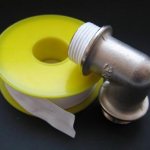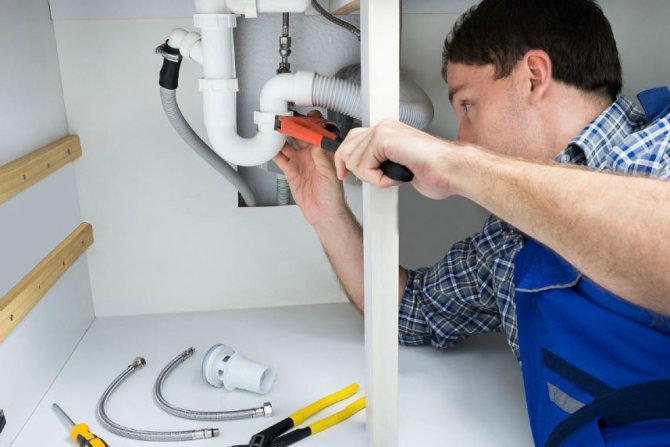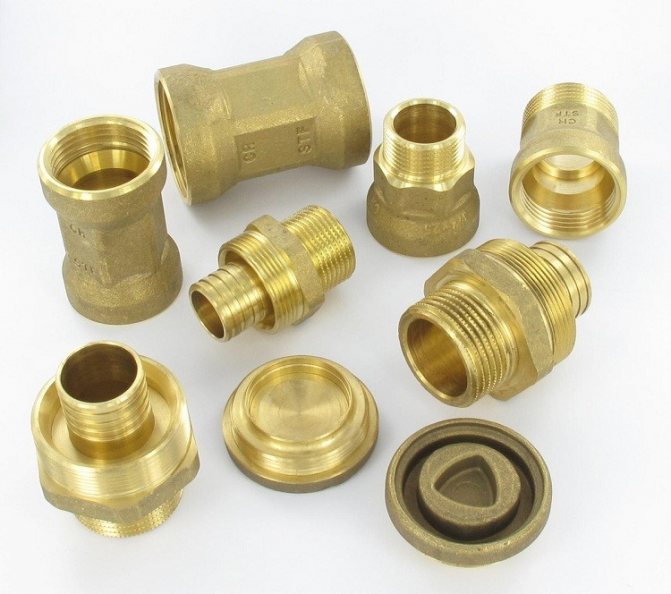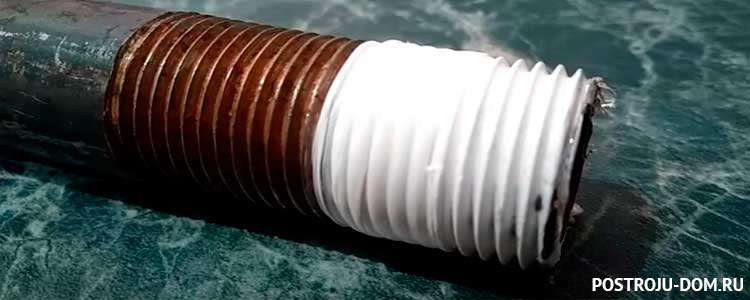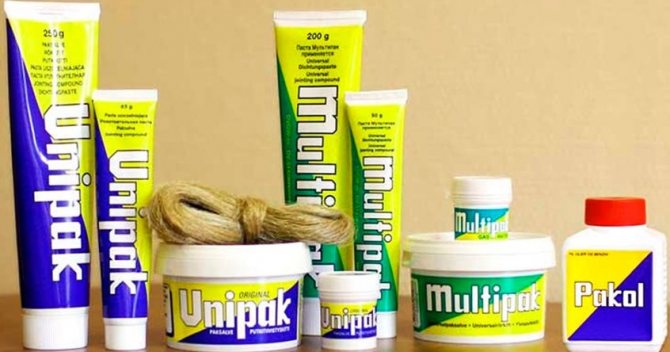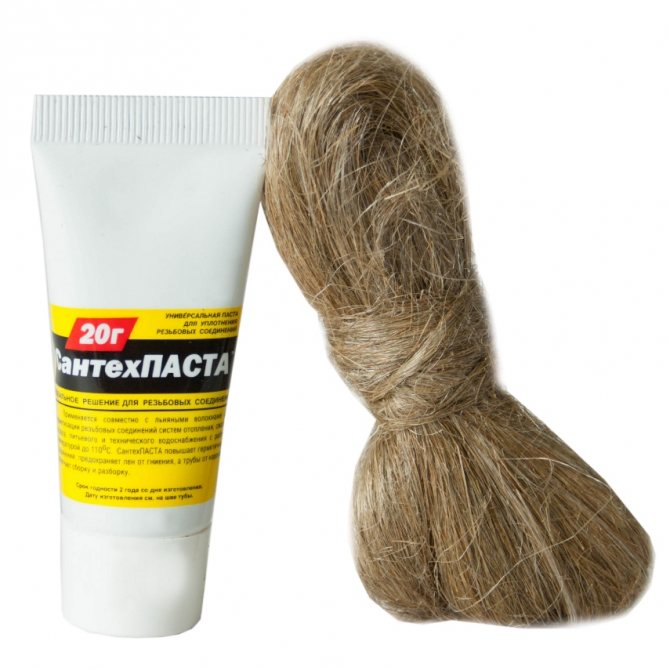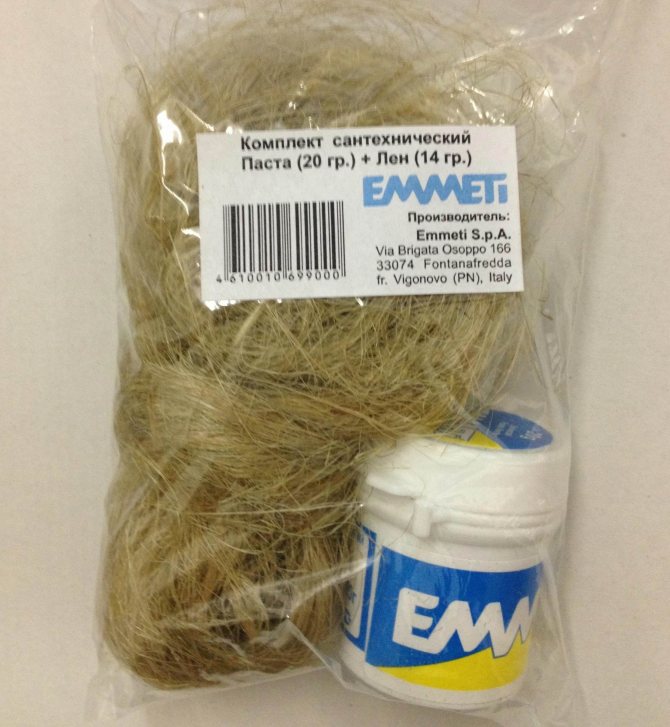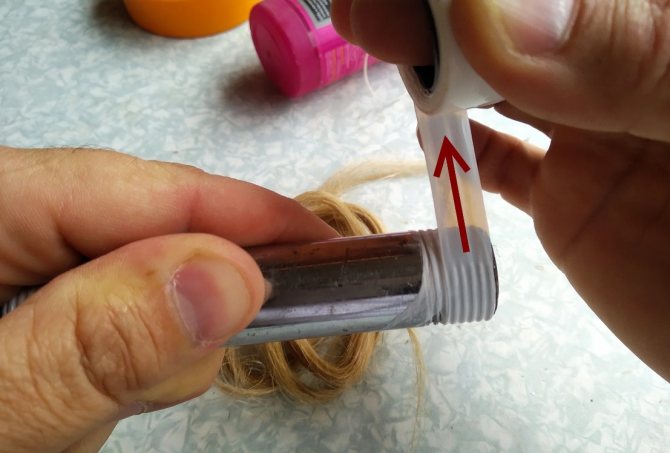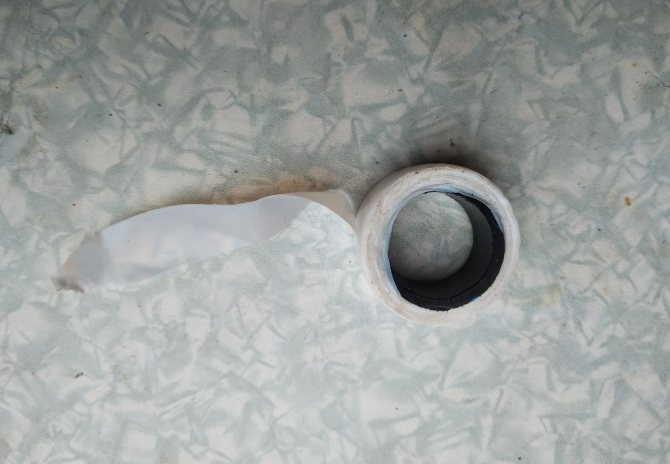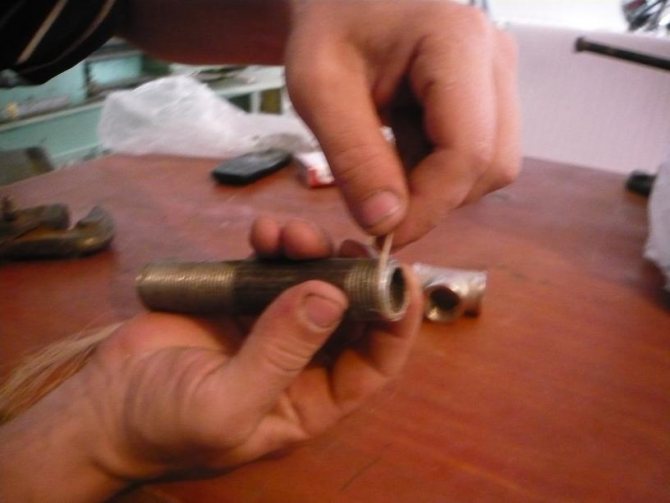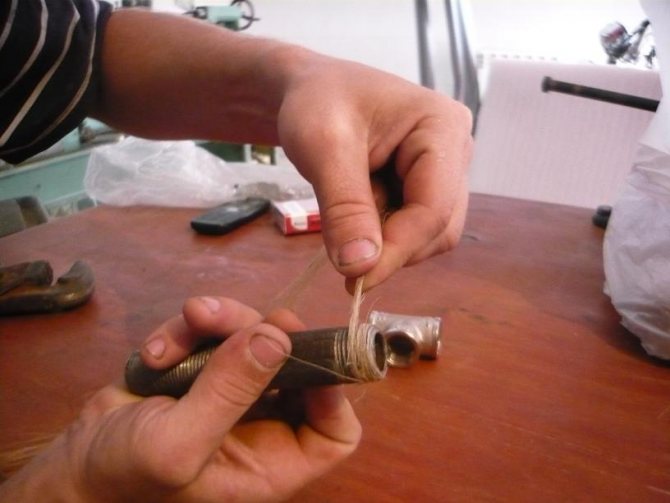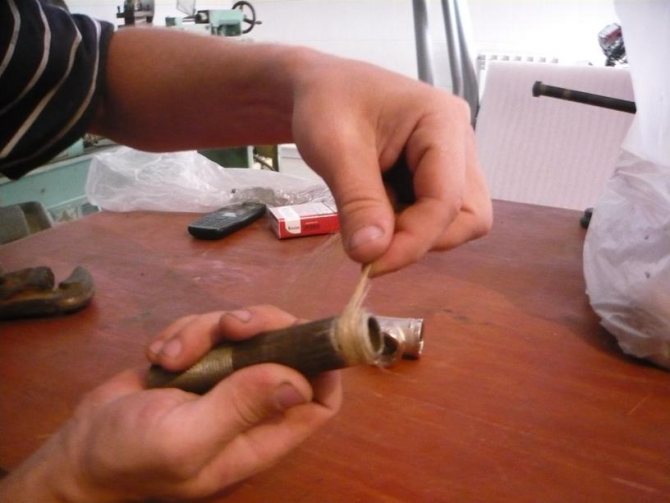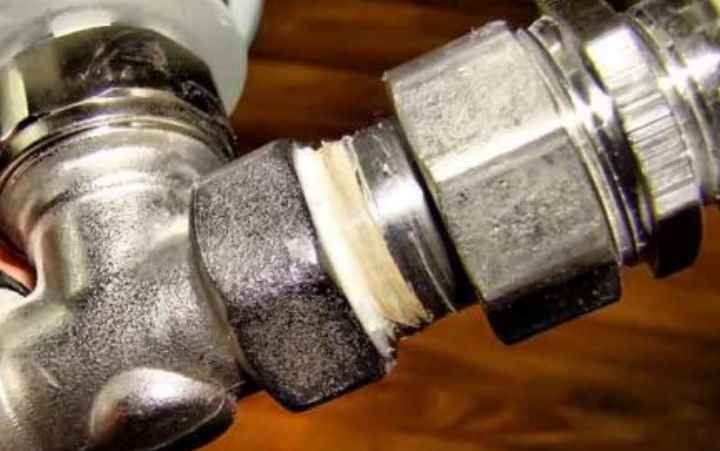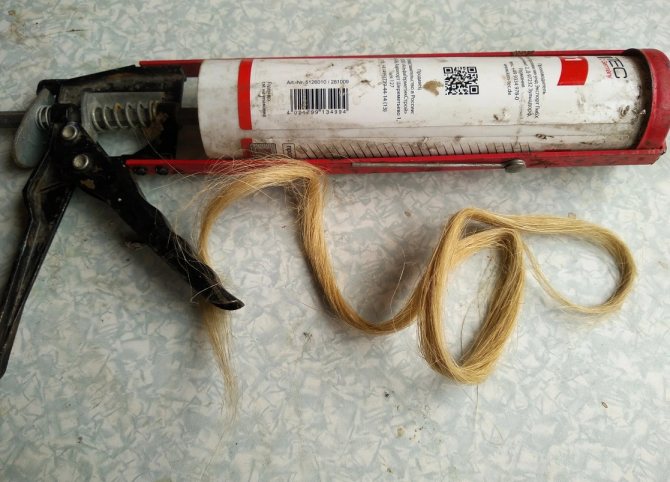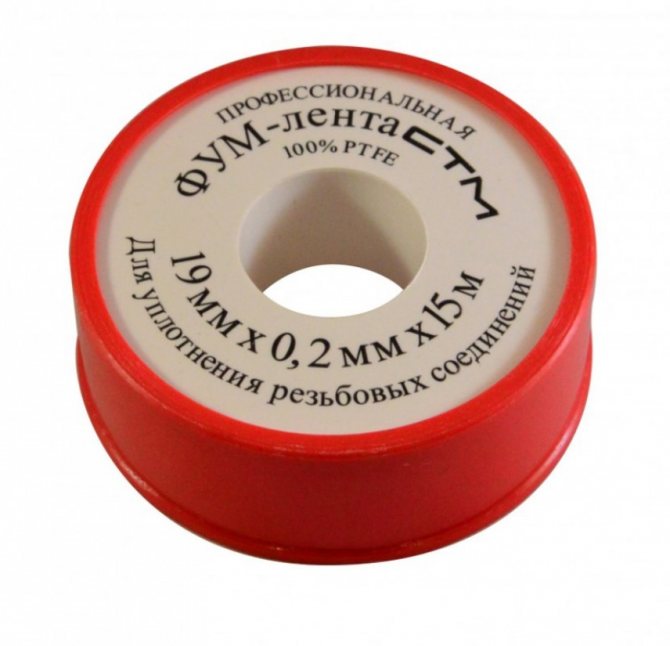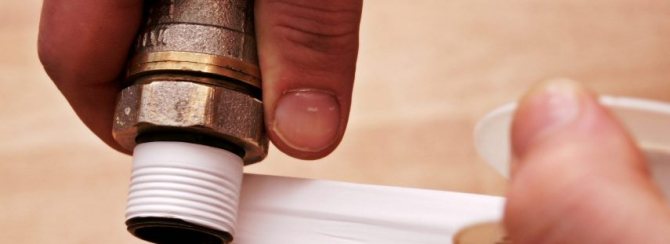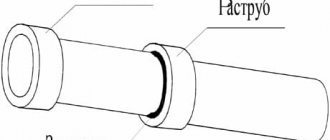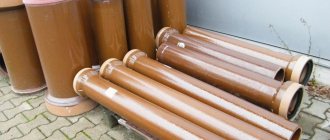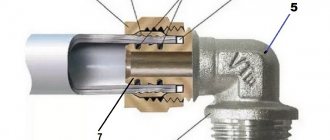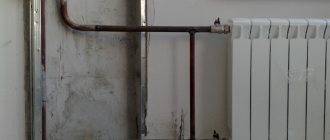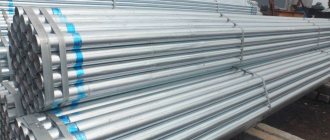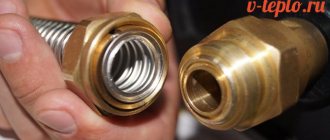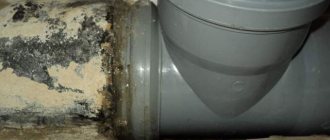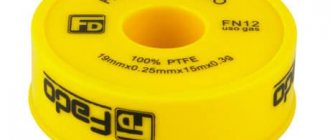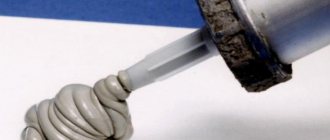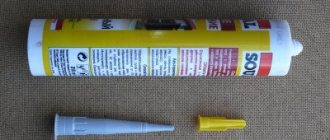The need for sealing
Sealing sewer pipes, like sealing all water pipes, is a very essential step in the pipeline installation process. It is especially important to properly seal the joints.
To prevent the pipeline from leaking, since the appearance of unpleasant odors in an apartment or a private house depends on this, it is necessary to choose the right seal for the sewer pipes.
This means knowing which sealant is best for sealing plastic, polypropylene, cast iron, steel, and other products. And you also need to have information on how to seal the threaded connections of the water supply, coupling, flange.
You need to familiarize yourself with other materials necessary for the repair or installation of heating systems, gas supply, repair of sewerage systems intended for draining acids and alkalis, other systems, so that, if necessary, do such work with your own hands.
How to seal any pipe - now in order and in more detail.
FUM application
FUM tapes and threads are used to seal threaded connections for hot water supply (DHW), heating systems (CO) and cold water supply (HVS). They are also used when connecting gas appliances to a gas pipeline.
Fluoroplastic is a plastic and strong material with a melting point above 400 degrees, resistant to oxygen and corrosive liquids. The thread and tape fill in the unevenness of the thread and seal the joint. Sealing FUM tapes are produced with a width of 10-16 mm and a thickness of 0.08-0.12 mm., FUM threads - with a diameter of 0.4-1.5 mm. With temperature drops and vibrations, the FUMs are deformed, and the threaded connection leaks.
The tape winding thickness depends on the pipe diameter and tape thickness. For pipes with a diameter of up to 20 mm, 2-3 layers of tape with a thickness of 0.12 or 1-1.5 layers of thread are wound. For pipes with a diameter of up to 40 mm, 5-6 layers or 2-3 layers of thread are wound. For pipes with a diameter over 40 mm, 8 or more layers of tape or 5 or more layers of thread are wound. For main pipelines, it is preferable to use tapes with silicone mastics.
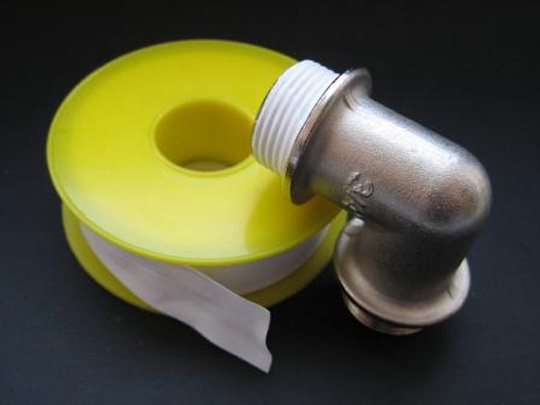
FUM sealing with tape
If the thread is rusty, the winding thickness is doubled. Before winding the tape, the threaded joint is cleaned with an iron brush and blown out with compressed air. The tape and thread are wound on the pipe or the thread of the fitting in an interference fit with a force of 0.5-1 kg clockwise. To seal the threaded connections of gas appliances, wind it counterclockwise.
Tapered from the edge of the joint. If pits and damage are visible on the threads after removing rust, use a different seal. FUM is used to seal intact threaded connections.
Is FUM tape used for sealing steam and water heating pipes? No, experienced plumbers seal such joints only with flax (tow) and sealant.
Role of sealing
If external defects of the pipes can be easily corrected, then in order to seal the pipe connection during operation, it will be necessary to completely suspend the functioning of the sewer system.
That is, re-sealing cast-iron sewer pipes, or risers with hot water, is the same as starting to re-install the pipeline system. Therefore, the appearance of leaks inside the water supply system should be avoided (for example, so that ground water does not get into the pipeline).
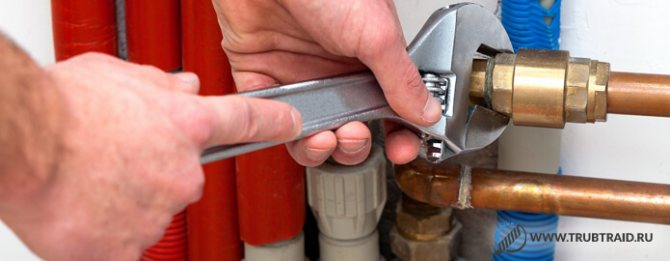

It is equally important that there are no slightest leaks from the inside of the sewer system, since this is fraught with the appearance of not only unpleasant odors, but a possible destructive effect on the walls of wet secretions from the pipe.
Sealing thread
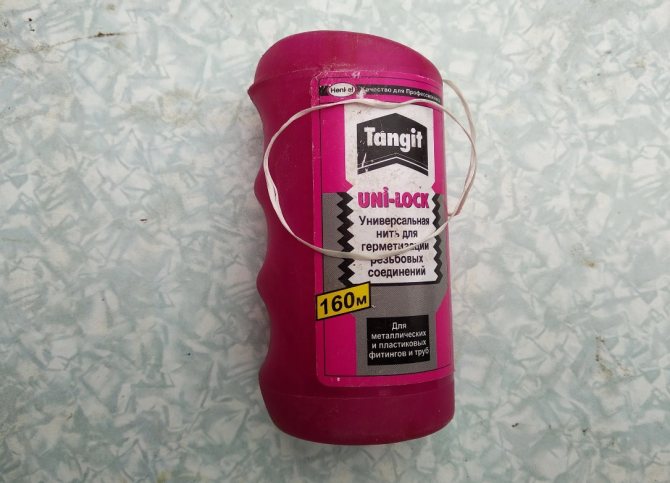

If my memory serves me, then it appeared on the shelves in a plumbing store (at least in our page) about 7-8 years ago, correct me in the comments if I'm wrong. It was Henkel's Tangit Uni-Lock. Everyone began to actively buy it, there was such a laudatory advertisement, everyone really liked it, but after a while people began to make repairs, change the plumbing, heating and other appliances.
We will face a very unpleasant problem, especially on large thread diameters, the connections were either very difficult to unscrew, or simply impossible, we had to burn out the thread with an acetylene torch! And all because the thread is almost not lubricated with anything, that is, the metal began to rust, as it absorbed moisture and it seems to me, let oxygen through, because I can not find any other explanation. The threads were just in a terrible state, I don't use them anymore. I agree that it is very convenient for her to pack and the connections are reliable and do not flow, although she also needs to train! I can advise you to additionally lubricate it with a sealant or plumbing paste.
Materials. What is the name of the thread for sealing pipes?
3.1. List of materials used
Sealing of pipe joints or sockets is carried out using:
- self-adhesive tape (regular and foil type);
- silicone sealants;
- anaerobic sealants;
- gels, pastes;
- epoxy resin;
- sulfur for technical purposes;
- bituminous mastic;
- winding record;
- fluoroplastic sealing material, etc.
Effective means are rubber seal (especially for standard sewer pipes) and pipe seal with linen (tow with solutions made on the basis of red lead and drying oil or Portland cement). The latter is used to seal large sockets.
Another very important tool often used by plumbers is plumbing thread (or, as it is also called, thread for sealing pipes).
3.2. Self-adhesive tapes
The agent is one of the newest in the field of use for sealing pipe joints.
It differs:
- good anti-corrosion properties;
- high quality sealing;
- efficiency in use;
- ease of use;
- long service life, since they are made on a high-strength polyethylene base;
- breadth of application.
With the help of self-adhesive tape, you can qualitatively carry out not only the sealing of the sewer pipe, but also apply it when installing plugs, rotary corners, bends, couplings, valves, and other elements of pipe fittings.
When carrying out sealing, you should adhere to the following algorithm:
- prepare the surface. To do this, you need to clean it from dirt, wipe it dry well;
- when winding the film on the joint, it is necessary to maintain it in a constant tension, in order to avoid possible folds, irregularities;
- it is necessary to wind the material in a spiral manner with an overlap, approximately half its width in order to ensure that the entire surface necessary for insulation is under two layers of material.
Important! Self-adhesive tape is UV-resistant. In order to ensure a long service life, it is recommended to wind another 1-2 protective layers of another material over the tape.
A primer is used to treat certain types of films. It will exclude the minimum impact on the tape of air, moisture, including precipitation. Such measures contribute to a significant extension of the life of the sealing material.
3.3. Silicone based sealants
Any rubber-based silicone sealant is available. Due to the presence of various substances, a reliable, long-term sealing, good adhesion to the surface is ensured.
It is best if the places of future sealing will be pre-treated with a primer. The hardener determines the type of sealant, cure time.
According to this classification, sealants are:
- neutral;
- acidic, characterized by chemical resistance and a relatively low price.
Silicone sealants can be used to seal both cast iron pipes and plastic risers.
After polymerization, the paste becomes rubbery.
Important! It is best to use a special assembly gun when working with sealants. Thanks to him, the paste is squeezed out smoothly, easily, in the required amount.
3.4. Tow
This material, together with red lead on drying oil, for decades has been and will remain one of the most reliable among many other analog-seals.
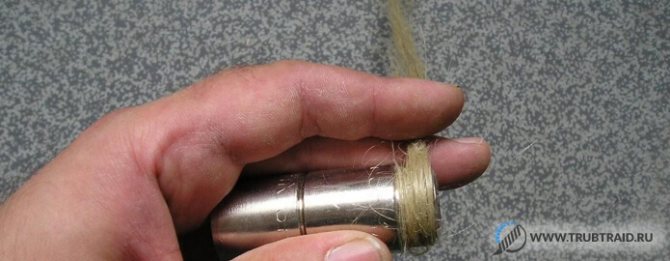

Thread with wound tow
With the use of linen strands, in the overwhelming majority of apartments and private houses, gas, heating, and plumbing structures were installed.
Important! The use of red lead makes it possible to prevent the occurrence of corrosive processes, which cannot be said about the iron analogue.
The main advantages of sealing with tow:
- reliability;
- ease of installation. In order to make a high-quality seal, it is necessary to wind tow on the external thread, generously coat the material with red lead and tighten the fitting well. After that, you need to tighten the lock nut. Simple, reliable;
- availability, minimal financial costs;
- ensuring a high level of adhesion;
- the presence of strong fixation of the connections after tightening with a gas (pipe) wrench.
Disadvantages:
- in order to correctly install the connection and the pipe as a whole, you must have a sufficient level of professional knowledge;
- applying too much force when tightening, can cause damage to threads, fittings;
- the complexity of dismantling work, which can lead to heating of individual units, in order to replace them with others, of higher quality;
- the need to monitor the state of the system, since over time, the strands lose their original properties, which can lead to gas leakage.
Anaerobic sealants
Anaerobic sealants play a special role in the installation or repair of piping systems.
This silicone sealant is used when laying cables in the ground. Namely, if the cable line must pass through aggressive soil, then it is allowed to place the cable in an asbestos-cement pipe.
The end, at the point of exit from the pipe, must be reliably sealed to prevent moisture and soil from entering the structure.
An anaerobic sealant is used as such a sealant. An example of such a cable seal in a pipe can be seen in Fig. 1, which corresponds to sheet a5-92-45 of the Standard Project for laying cables with a voltage of 35 kV in soil.
The price for such work depends on the length and diameter of the pipe part where the sealing process needs to be carried out.
Picture 1
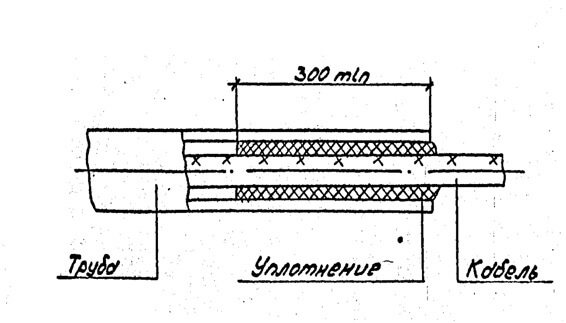

Each type of system is determined by specific regulatory documents, in which the permissible load on the pipeline is strictly regulated. Although the standards are different for different pipe connections, each regulation specifies that threaded and flanged connections must be subject to special tightness.
In this regard, it is necessary to use modern and reliable materials for sealing, which is an anaerobic sealant. It is used for sealing high pressure threaded connections where minimal leakage of the working medium is not allowed.
4.1. Application
Until recently, these pastes were used only in the military industry, aerospace, and the engineering industry. That is, the fact that they found their application where strong, reliable, durable connections were needed.
Today, such material is used in the repair or installation of threaded connections for water supply systems, gas and heat supply systems. They are also called thread clamps.
Anaerobic sealants are used successfully when a conventional gel pad is required. One cannot do without them, both in mass housing construction and in private households.
It can be noted that, due to its significant advantages, anaerobic sealants are becoming more and more popular when working with threaded connections.
Important! Anaerobic pastes are used in extreme pipeline operating conditions. The sealant is ideal for sealing threads with a sealant in an aggressive environment with high temperatures or pressures up to 50 atm.
4.2. Advantages and disadvantages
As with any sealant, anaerobic sealant has its positive and negative sides.
The "pluses" include:
- ease of use. You do not need to have a lot of work experience, serious skills of a plumber to learn how to use the material correctly;
- quick application and twisting, which allows you to complete the work within 20-25 seconds;
- economical consumption of substances. This means that if there is an excess of paste on one threaded connection, they are transferred to another;
- ensuring complete sealing, which allows the joints to be successfully operated in extreme temperature conditions at high pressures;
- the possibility of anticorrosive action on a metal surface;
- affordable price, given the incredible properties of the substance.
A negative point can be considered the fact that during repair or installation at low temperatures, the agent must be warmed up.
Advantages and disadvantages
There are advantages and disadvantages to using different thread sealants, which must be borne in mind before proceeding with the sealing procedure.
There are a lot of advantages of using a thread sealant:
- Retains its properties despite significant temperature fluctuations. This does not affect the tightness of the joint in any way - it remains unchanged.
- Resistance to mechanical stress. Unscrewing the nuts by accident will not work. This will require considerable effort. If water is supplied under high pressure, then the nuts without sealant can loosen from vibration in the pipes. This will not happen here.
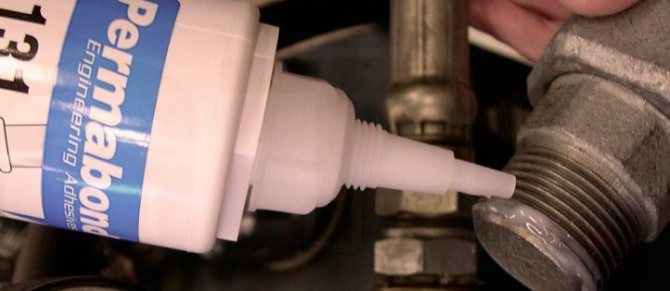

- The ability to penetrate the smallest cracks and crevices. Due to this, a high adherence of the parts to each other is achieved and, therefore, complete tightness.
- Low consumption. Very little material is required to process the threads, so one purchased bottle will be enough to process all the pipes in an average apartment.
- Ease of use. It is intuitive how to use the sealant. It also comes with detailed instructions with all the characteristics, precautions, recommendations for use.
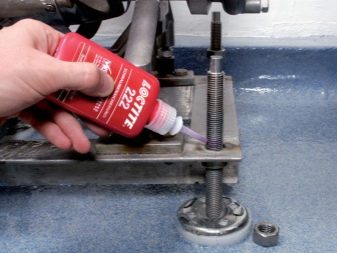

In addition to all the listed advantages, sealants also have disadvantages:
- In order to disconnect the pipes (for example, for repairs), you will have to exert excessive force. Sometimes dismantling is not possible at all, because a strong fixing sealant was chosen. Then the pipe becomes monolithic. The only way out in this case is to break the pipe.
- Compared to traditional materials, the sealant is quite expensive. If you take a product from a good eminent manufacturer, then the price tag will be even higher.
- You will need to wait until the sealant is completely dry. The setting time depends on the specific brand.However, until the joint "seizes", the pipe cannot be used.
Sealing with other materials
In addition to the aforementioned seals, the following are often used for sealing:
- epoxy resin. It is clear that the principle of its action is the same as that of the glue of the same name, produced on its basis. using this substance, they connect the risers of the sewer system;
- Portland cement. With its help, more than one sealing mixture is produced, which, in combination with an asbestos rope, is used to caulk the socket joints of the pipes of the cast-iron sewer system;
- petroleum bitumen or asphalt mastic. These substances are very effective in cases where ceramic or cast iron sockets need to be sealed;
- technical gray. When using this substance, the sealing of cast iron joints and similar sockets is almost ideal.
Important! Before use, the sulfur must be broken into small pieces, heated to a liquid state and filled with cracks. The uncured substance allows the compound to be adjusted.
Sealants are different in purpose, depending on the material of manufacture. Before installing the seal, you need to remember that they are trapezoidal, shaped (P-, H-, T-shaped) and other profiles.
They are installed on pipelines, car windows, house windows. Such products are excellent waterproofers, dock seals. They can also be used as depreciation materials.
For their manufacture, special rubber is used, which is highly resistant to oils, gasoline, water, and high temperatures.
On those pipelines where oil and gasoline products are transported, one can often find the NT 42-75 / 7 seal, which is distinguished by its hardness, high heat resistance, and reliability.
The use of sealing materials in various fields
It often happens that it is necessary to securely fix the bearing surface of the pipe. To do this, use a steel pipe bracket with a rubber seal.
In the event that a leak appears in the riser not at the junction, but directly on the pipe, then rather quickly and, relatively, qualitatively, you can seal the pipe using a pipe clamp with a rubber seal.
Different seals are used in different areas of life. For example, when repairing the valve mechanism of a car, rubber gaskets are used as a seal for the tubes of the rods of the pushers.
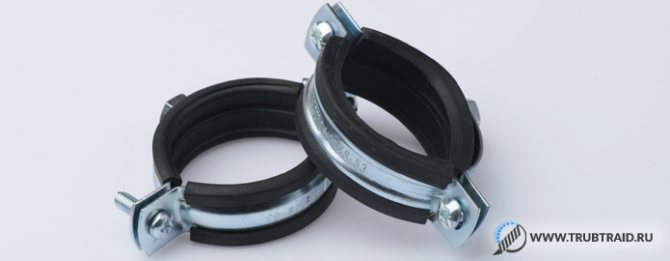

Bracket with rubber seal
Car owners often carry out some repairs to their "iron horse" themselves. Replacing the extension arm ("crab"), laying the intake pipe, other relatively not too voluminous, but expensive work, you can do it yourself, which most amateur motorists do.
If, for example, the gasket of the "pants" is burnt out, then very quickly and reliably the assembly can be sealed with the help of a high-temperature sealant, with which it is necessary to spread the gasket and securely tighten the nuts on the studs. Budget option - but reliable.
In complex technical structures, it is necessary for the seal to serve for a long time and reliably. These include powerful turbine generators, for which it is necessary to ensure a continuous oil supply to the end shaft seal.
The design of such a device, an important part of which is the anti-siphon tube of the hydrogen seal, is quite complex, like the very principle of its operation.
A special place in oil and gas equipment is occupied by a mud pipe with a mechanical seal. Among all device options, JJC products occupy a special place.
Mechanical seal
They differ:
- rational design;
- ease of installation and replacement of seals;
- long-term operation;
- reliability;
- high efficiency;
- safety while drilling oil and gas wells.
Seals are also used in the arms industry. Among fans of pneumatic weapons, pneumatic rifles of the Turkish company Hatsan are in special demand. For their successful operation, it is necessary to change the seal of the small Hatsan AT-44 air tube in time, the price of which is about $ 3. for 1 pc.
How to reel
I'll make a reservation right away: maybe someone performs this operation differently. But for my own I can say with confidence: the connection is tight and reliable.
A small bunch of flax is taken, approximately as in the photo below, this is for winding a half-inch pipe ("1/2"). In general, the ability to take flax exactly as much as needed for a specific connection comes with experience. One thing I can say for sure: it is better to overdo it than take less than you need.
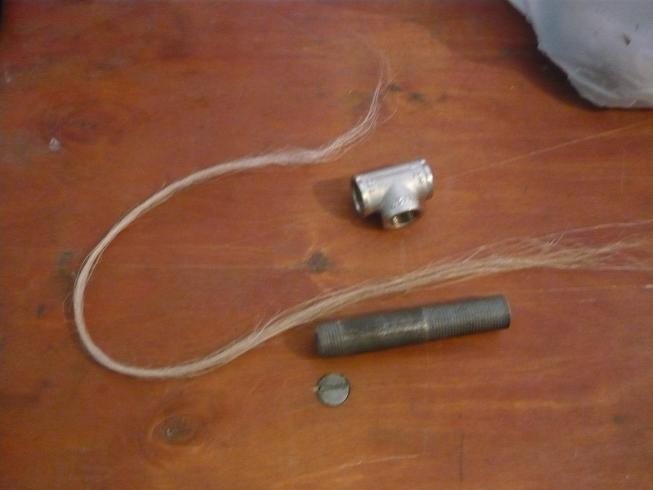

Linen is wound on the thread from the edge to the base, in the direction of the thread. If you look at the end, it turns out clockwise. It is not essential to get into every groove and go strictly in a spiral. The direction of winding, tension is important and that the thread is covered with an even layer of flax over the entire surface.
It is even possible to lay the winding in several layers if the bundle is initially taken too thin.
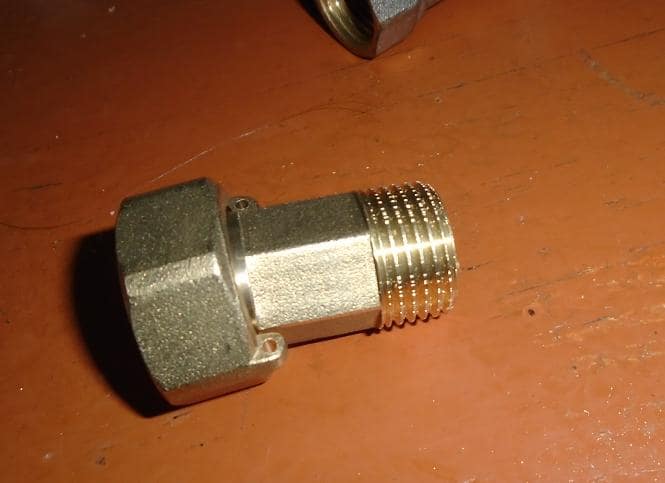

Sometimes there is a very smooth thread, for example, at water meters, flax scrolls when reeling. To eliminate this unpleasant phenomenon, it is enough to slightly scratch the thread, for example, slightly walking across the turns with a sharp knife. Even barely noticeable burrs and scratches can firmly stop the flax fibers from scrolling.
Further, the coiled area should be generously greased with investment paste. Even if you overdo it, the paste is easily removed after tightening the parts. The parts are ready to be twisted.
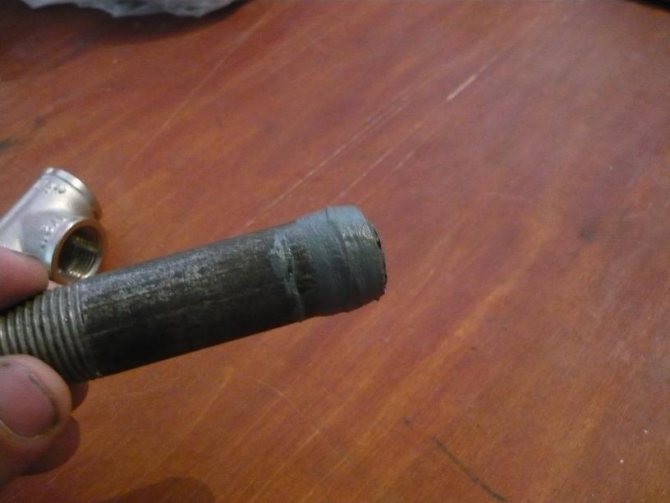

How to seal threaded connections for heating
7.1. Gaskets
Many people use end gaskets to seal heating pipes. This method is technologically the fastest, but the quality of sealing could be better.
The fact is that during the assembly of the structure, the gasket is strongly pressed by the thread and the joint density may suffer a little, since the part opposite to the external thread has a slight narrowing.
But in order for the joint to be tighter and more reliable, they use a paronite or fluoroplastic part, after the installation of which, it is necessary to securely screw the entire structure. Although it is not always possible to achieve transitions without narrowing with this method.
Considering this, the gasket is often installed when sealing sensors and instruments for measuring pressure or temperature, where the hydraulic resistance is not very high. True, experienced plumbers, for greater confidence and reliability, use an additional seal in the form of, for example, tow with red lead. They explain this by the fact that we are dealing with hot water, which is not always safe.
7.2. FUM tape
Since the coefficient of friction of the fluoroplastic tape is low, it can be used to easily assemble the whole threaded structure with its help. The advantages of the material include high chemical resistance and long-term operation.
Like all materials, FUM-tape has some "disadvantages":
Winding FUM tape
- during the assembly process, it can be torn into separate pieces, or twisted back;
- cannot be used in joints with possible thermal deformations. The fact is that the tape has poor adhesion to the metal, and if the joint “plays”, it is possible that the seal is squeezed out;
- can act as a reliable sealant for threaded connections only up to 25 mm in diameter. Therefore, using such a material, it is impossible to completely assemble the heating system.
7.3. Tow
This simple and cheap material has been a reliable sealant for decades. Lead red lead on drying oil or ordinary oil paint is most often used for impregnation.
Despite the emergence of good modern seals, flax strands have been and remain the leader among the most reliable sealants. Due to its positive qualities, the material is often used in the installation or repair of heating systems.
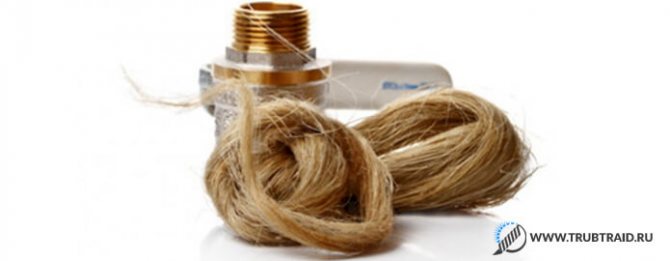

Oakum is different:
- reliability;
- the quality of the seal;
- cheapness;
- ease of use.
The disadvantages include:
- limited service life;
- tendency to dry out;
- the need to have certain skills in winding and wrapping.
Sealing with FUM tape or plumbing thread
Thanks to their ease of use, these materials have gained high popularity. To seal most threaded connections in an apartment, it is enough to wind the number of turns of tape specified in the instructions on the pipe and tighten with a wrench. At the same time, special care is not required when laying; on the contrary, many manufacturers recommend winding a little obliquely. The connection with such a seal is easily disassembled if necessary.
At the same time, the fum tape does not tolerate vibrations, does not adhere well to fine threads, and can be damaged by coarse cutting. It is not recommended to seal pipes of significant diameter with it.
A little about the connections of gas risers
Most often, gas is transported by steel pipes. Indoors, plastic gas hoses are also used. Almost always, a gas pipeline consists of several risers, and therefore the problem of their connections arises.
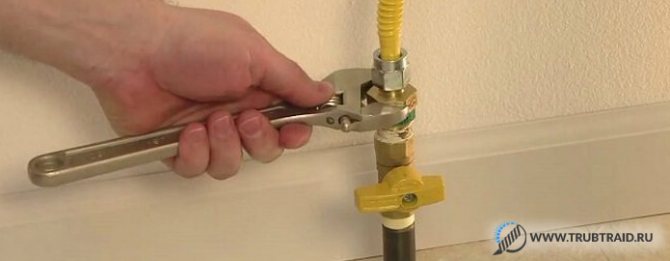

Gas can seep out on fittings, threaded connections. Therefore, perfect sealing of gas pipe joints is the number one task when installing or repairing a gas pipeline.
For such work, special sealants, seals, etc. are used. Let's pay attention to the most demanded of them, which by their quality have won the trust of citizens.

